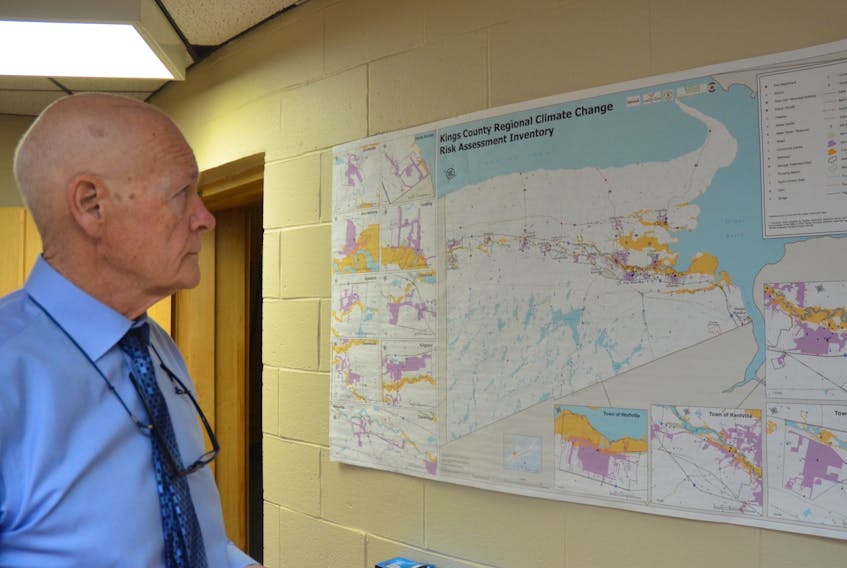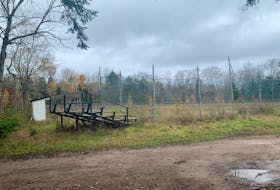KENTVILLE, NS - The bad news? It's taking a long time. The good news? There's constant progress.
When it comes to establishing the new County of Kings Municipal Planning Strategy (MPS) and Land Use Bylaw (LUB), county Mayor Peter Muttart won’t estimate how long it could be before the drafts receive a stamp of approval from the council. It will all depend on the degree of discussion around the table, he says.
But before it ever gets to that point, the county's planning advisory committee (PAC) is responsible for a full review of the draft documents with staff. PAC and staff meet regularly for that purpose and are moving along, Muttart says.
The issue is a touchy one.
In Kings County, he says, there are always concerns about the preservation of agricultural land.
“One of the difficulties from a revenue perspective, of course, is that agricultural land represents about one per cent of our revenues,” Muttart said.
“We do our utmost to make sure that we do not encroach on agricultural land but there’s no offsetting revenue stream.”
When the PAC is considering the creation of growth centres or increasing existing growth centres, these two competing factors must be taken into account.
There are ways to minimize this, Muttart says. He believes the ongoing land use conflict between residential development and the preservation of agricultural land wouldn’t be an issue in Kings if serious discussions about municipal unification came to the table. Development could be driven to where infrastructure and services are already in the ground, he says, something that isn't possible with silo municipal units.
County of Kings planning and development services manager Laura Mosher said one purpose of the PAC review is to give staff direction on proposed changes coming out of public consultation meetings held in September 2017.
“The biggest issues that came out of the public meetings are the protection of agricultural land and how best to permit large-scale wind turbines,” Mosher said.
The committee has yet to tackle aspects relating to agricultural land protection but it has reached a positive outcome for wind turbines. Staff, she says, will be editing the draft documents so that large-scale wind turbines will be permitted in a designated area in the southwestern portion of the municipality.
READ A STORY ABOUT A CITIZEN PROPOSAL FOR LARGE-SCALE WIND TURBINES IN KINGS COUNTY HERE.
READ A STORY ABOUT A SMALL-SCALE WIND TURBINE AT THE VWRM FACILITY IN KENTVILLE HERE.
Agricultural small lot proposal explained
The draft land use planning documents contain a proposal that allows five-acre building lots to be created in the agricultural (A1) zone, provided the lot has 1,000 feet of road frontage. However, the PAC has yet to discuss this option and Mosher said it is still very much up in the air.
The proposal, she says, is intended to maintain the character of farming areas by ensuring houses remain far apart. It also aims to preserve the rear portion of agricultural land parcels since a five-acre lot with 1,000 feet of frontage isn’t very deep.
It's hoped this idea will reduce the total amount of farmland potentially lost to development — a number that could be further reduced if the owner of the five-acre lot farms any portion of it.
Exact numbers aren't known on what the total acreage potential is for the small lot proposal, as there are a number of other factors at play. For example, there are areas where there are 1,000 feet of vacant land between houses, but there may be several properties within that area.
In this instance, consolidation would first need to occur to open that area for development. While that's possible, she says, the likelihood that this type of property could be developed in the near or even distant future is unlikely.
The method that is currently most often used to build non-farm residential dwellings in the agricultural area is the pre-1994 lot provision. This states that if a lot has been in its current configuration since 1994, the owner is permitted to build a non-farm dwelling on the property.
Staff estimates there are 2,000 of this type of property within the agricultural zone — and that's a conservative number.
But, she says, people aren't building on them. Within the last 17 years, less than one per cent of those 2,000 lots have been developed. Just because there is a possibility for development, she says, it doesn’t guarantee that every opportunity will result in it.
Did you know?
- The Municipality of the County of Kings is approximately 557,400 acres, which does not include the towns of Kentville, Wolfville and Berwick but does include Department of National Defence lands at Aldershot and Greenwood, as well as First Nations reserves.
- The current Agricultural (A1) land area in Kings County is approximately 98,200 acres.
- Of this area, approximately 57,000 acres were actively farmed in 2012.
- The current draft of the Land Use Bylaw proposes to increase that area by approximately 600 acres to 98,800 acres.
- County of Kings planning and development services manager Laura Mosher said more land could be added to the Agricultural (A1) zone as part of the review of the draft Land Use Bylaw by the planning advisory committee.









